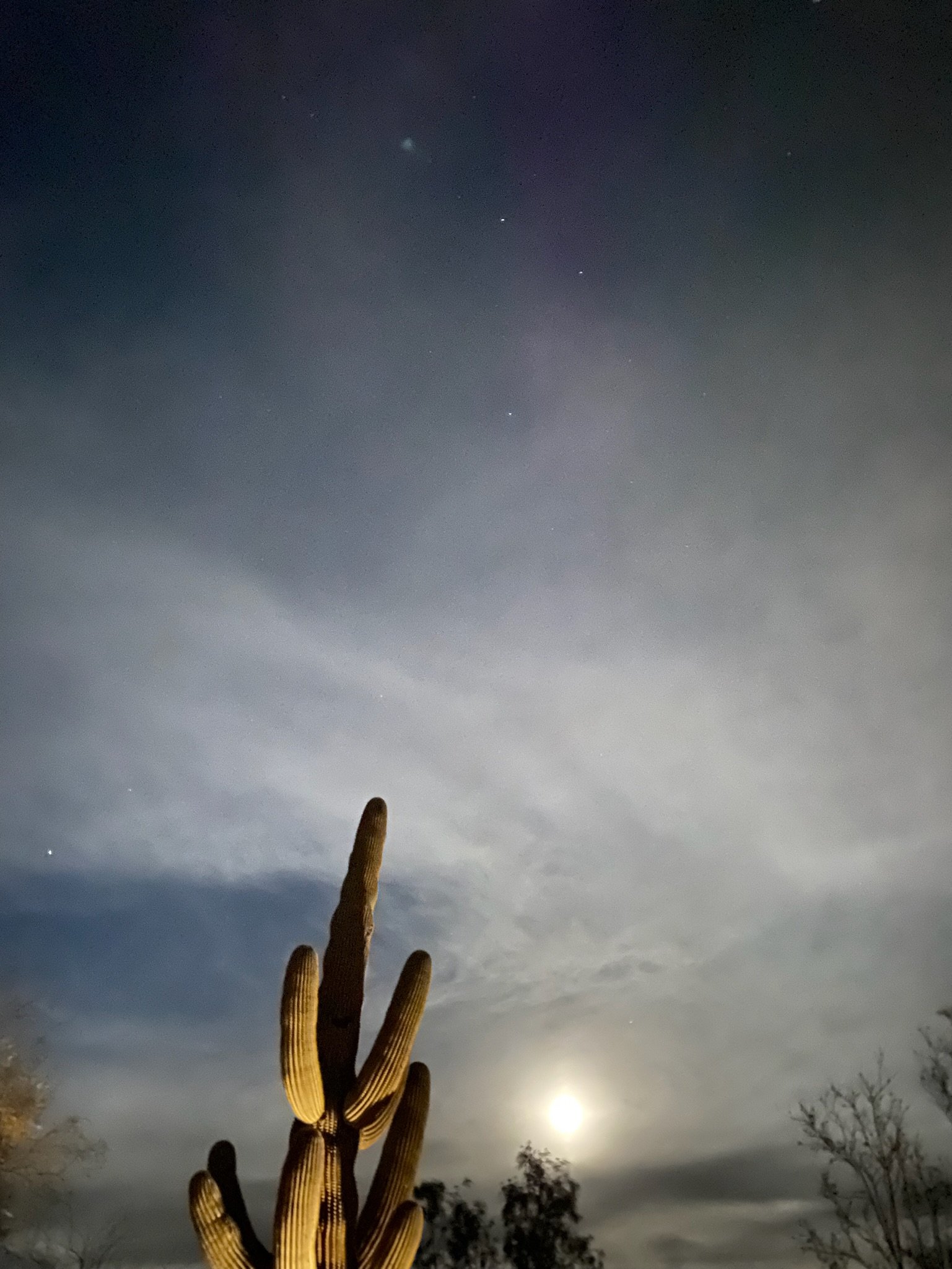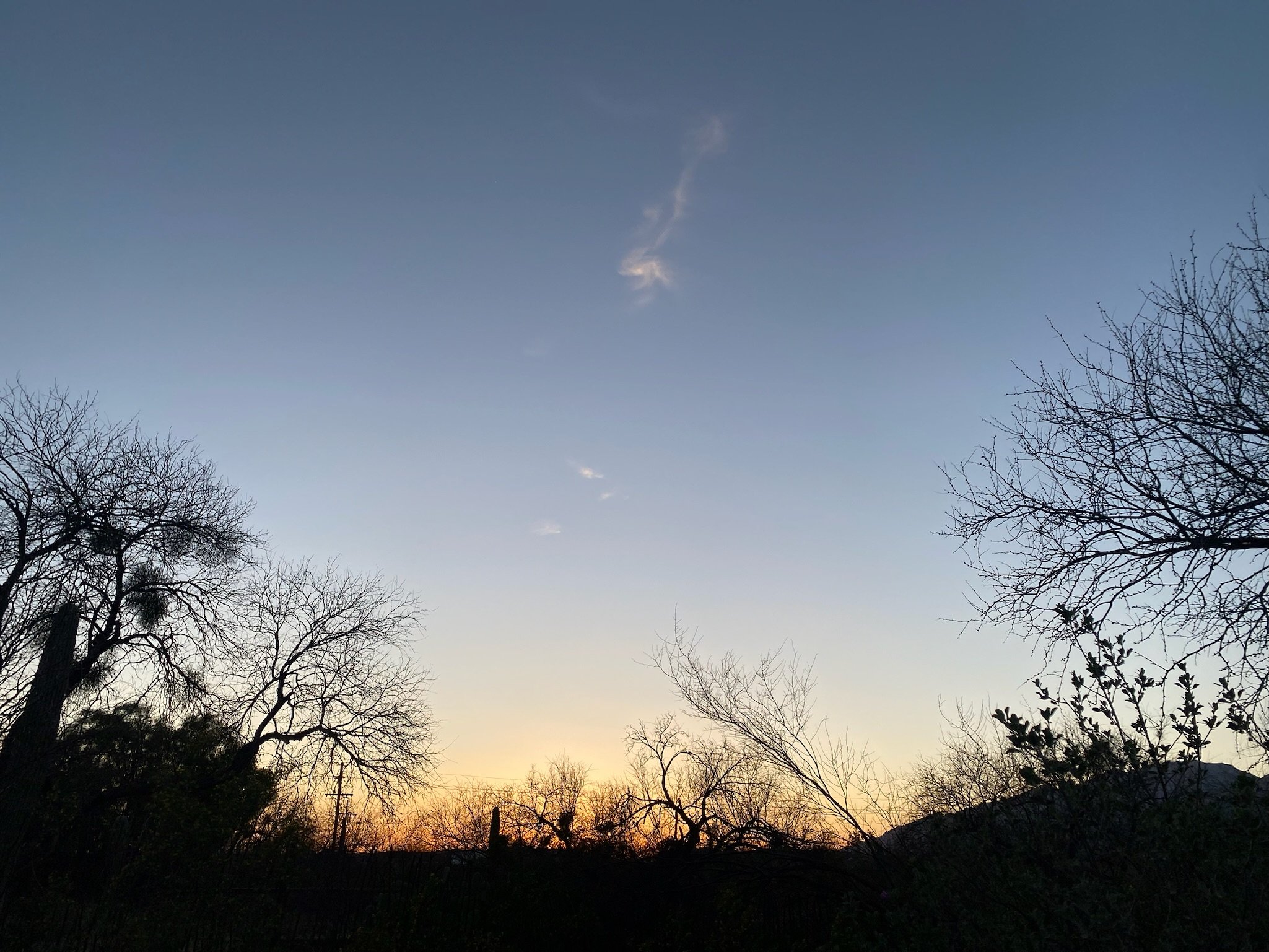Loafing Around
At the end of March, I made a journey from Alaska to Arizona. I left feet of snow and subfreezing temperatures to arrive in a desert landscape. This journey was primarily to seek medical advice for my progressive, complex chronic disease, ME/CFS.
The journey was hard on my body, as were the evaluations by physicians. And, I faced some of the most severe crashes I've had in a while. Though I was hopeful the trip would provide some radical new insight, I was also realistic.
ME/CFS has no FDA approved treatments and I am part of the 25% of patients who are housebound or bedbound with disabling symptoms of disease. Evaluations by a career ME/CFS specialist confirmed that I was, as he humorously put it, 2 out of 10 on his severity scale, with 0 being "dead.” As he said, I am “not dead yet.”
Jokes aside, what this really means is that I am at around 80% maximum severity: I am mostly supine during the day. Complex cognitive tasks can be quite challenging, including things like reading and writing. In fact, this blog was dictated and edited over a series of days— so please do excuse any unusual words or typos.
Night sky in Tucson
After evaluation by physicians, my partner and i returned to the Tucson Luxury Retreat where we had stayed the previous year. We settled in for several weeks to rest aggressively before returning to Alaska, an attempt to mitigate further deterioration that might be spurred by travel.
Aggressive rest is not my nature. This therapeutic approach to treating ME/CFS means extended periods in bed with low sensory inputs, trying to sleep as much as possible, moving as little as possible, and with minimal physical and cognitive exertion. As someone who previously climbed mountains, skied daily in winter, and biked to work from the gym from summer, as someone who taught college classes, relished dense books of literary theory, and created cipher-like poems, this is a massive lifestyle adjustment.
Some days it's quite hard to cope with what it means to be so limited in my body and mind. A new challenge arose upon arriving in Arizona as well; I discovered that UV light and heat flared my erythromelalgia. I had hoped to be able to rest outside, but instead I found myself in darkened rooms, avoiding light. Still, the small joys of resting in a different place were abundant.
I longed to be able to do some of the things I remember from my previous visit. And, I found myself saddened by the reality that my body was weakened and more fragile and sensitive than the year before. However, the rooms of this beautiful retreat each tell a colorful story, appointed with exquisite paintings, comfortable furnishings, and bright textiles. In the pleasure of these rooms, I allowed myself to rest, perhaps in ways I wouldn't have allowed myself to do in my own home. In my resting, I discovered that through the windows I could hear the world, even if I needed to have the curtains drawn. I made a habit of closely listening to birds, coyotes, and stirrings of wind outside.
Convalescent view
Each night at dusk as light faded, I would rise from my supine rest, and step out onto the grounds. Wrapped in a shawl and sometimes with silk gloves to protect my hands from residual light, I would take a few steps around the property: walking slowly, carefully, and drinking in every moment of fresh air. When when is inside almost all the time, there's nothing quite like the mineral fresh smell of evening desert air.
On these walks, I became intent on learning the names every single plant in the front garden and determined to identify every bird I heard or saw. I became quite addicted to the Merlin Bird ID app put out by Cornell. Because the light was low, sometimes seeing a bird was challenging. But I could listen to their calls. I used the sound ID to identify a myriad of bird friends: Gamble quail, verdin, vermilion flycatcher, hummingbirds (who knew they were so loud!), doves, even a rare Nashville warbler, who seemed to visit the yard every night just as I popped out for my tiny toddle.
Post sunset view
These short nightly walks were at once triumphant and tender: glorious time in the world, but also only a glimpse of that world I longed to be in so much. But, one has to try to bring humor to these moments, to embrace the tears and appropriate grief but also laugh and find lightness (especially since I must hide from the actual light). This brings me to the notion of loafing around.
Loaf as a verb has a debated etymology. It is thought perhaps to refer to servants who might have eaten loaves of their masters, literally loafers. But regardless of its origin, the term has come to be the antithesis of work. Indeed, I'm completely and totally unable to work at this point, with my eyes unable to focus on screen text for much duration and cognitive strain sometimes causing dramatic post exertional malaise.
A loaf of bread is, however, not the antithesis of work. A loaf of bread is usually a massive amount of work; crafting a well-made loaf of bread takes time, care, and lots of fervent attention.
Being mostly supine, I'm not able to cook with such dedication anymore. In fact, I map out the gestures of my cooking in my head often before I get up in the morning or as I'm falling asleep at night. I pull out my ingredients first thing in the morning when I have a bit more ability to be upright, and ask my partner to assist maneuvering any heavy equipment into an accessible location.
I try to batch all the little tasks of cooking into small upright clusters I can do as I retrieve water, go to the restroom, or otherwise rouse from my couch or bed. So, a more elaborate project like loaf of bread (such as my undeniably delicious lentil bread) might seem a bit out of reach these days, both literally from my supine position and in the act of making. Cooking with any sort of fatigue is challenging, but baking with fatigue and brainfog is a next level effort as it usually involves so many steps and so much time.
Still, there is nothing more reviving when one is in need of care than a slice of homemade bread, fresh out of the oven. I came across a recipe that inspired me and I adapted at the Tucson Luxury Retreat. Using the beautiful kitchen using the equipment at hand, I made this tender loaf, perfect for a little thing around.
The simple recipe below really only necessitates a few ingredients and very little upright time, about 15 minutes total. Despite its simplicity the loaf is quite adaptable and can be flavored and spiced in just about any way to accompany whatever spreads, jams, fillings, cheeses, or other accoutrement you might want to put between its slices.
I rather love the pun of loafer like me making a loaf. It seems a way to find humor in the situation, and also nourishment even in the most trying times.
sliced oat loaf
Loafer's Oat Loaf
Makes 1 loaf, about 12 slices
Note that all spices are optional. Consider replacing oregano with any green herb, adding nutmeg and lemon zest, grinding in black pepper, whatever suits your fancy.
Ingredients:
1 1/2/ cups milk
2 tablespoons apple cider vinegar
3 cups gluten-free oat flour
1 teaspoon baking soda
1 tablespoon dried oregano
1 teaspoon salt
1/4 teaspoon cardamom
1/4 teaspoon cinnamon
Method:
1. In a bowl combine vinegar and milk. Preheat oven to 350F. Line a loaf pan with parchment. Step away and rest for at least 30 minutes. (upright time: about 5 minutes)
2. In a large bowl, whisk together the flour, baking soda, salt, and any spices of your choosing. (upright time: about 2 minutes)
3. Slowly add in milk. Mix until well combined. This bread is gluten-free so you do not need to worry about overmixing. (upright time: about 3 minutes)
4. Pour batter into pan, and place in the middle rack of the oven (upright time: about 1 minute). Step away and rest for about 50 minutes. Check in on your bread, it should be golden brown bounce back to the touch, and a toothpick inserted should come out clean. It could take up to about 10 minutes more. If you have a remote thermometer that will alarm and allow you to rest, internal temperature should be around 190 F or above, though I always recommend the toothpick test as well.
5. Let cool for at least a half an hour in the pan, then remove and slice with the bread knife (upright time: about 5 minutes). Enjoy a slice and toast your accomplishment of pacing your baking and of making something delicious!



